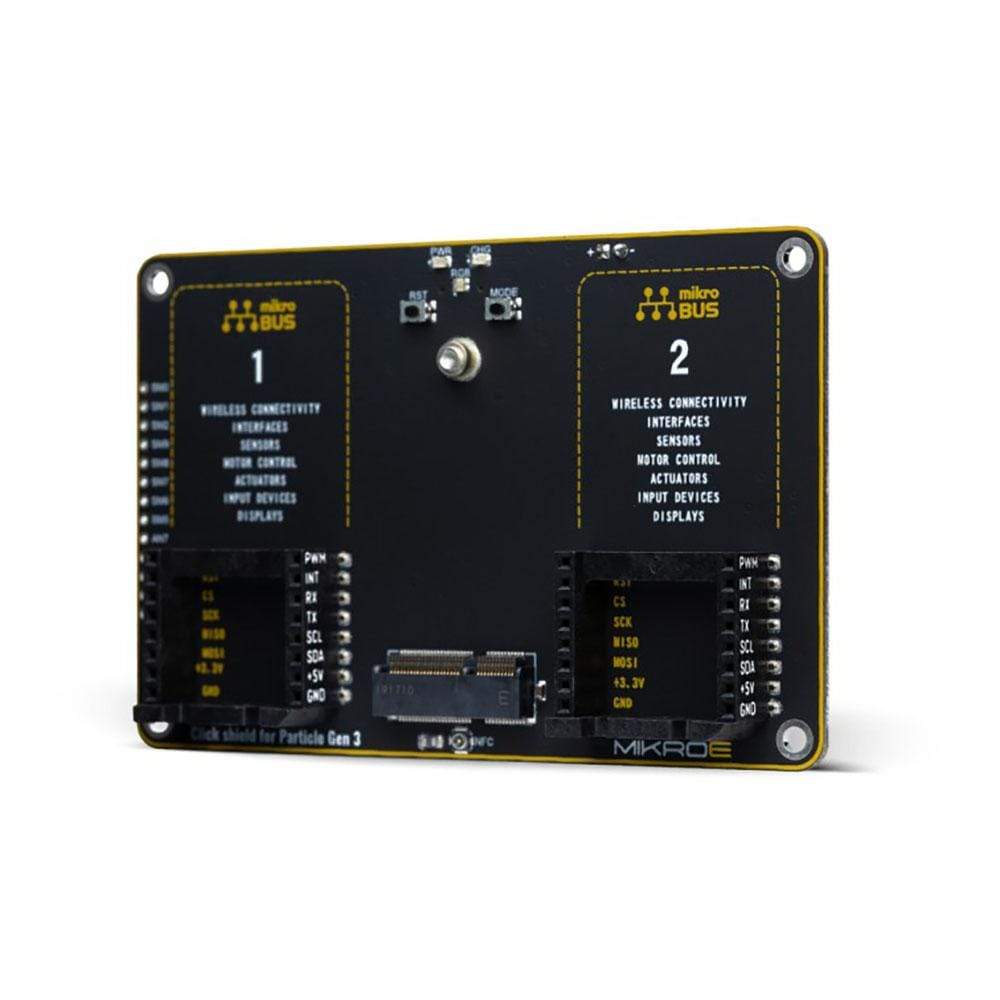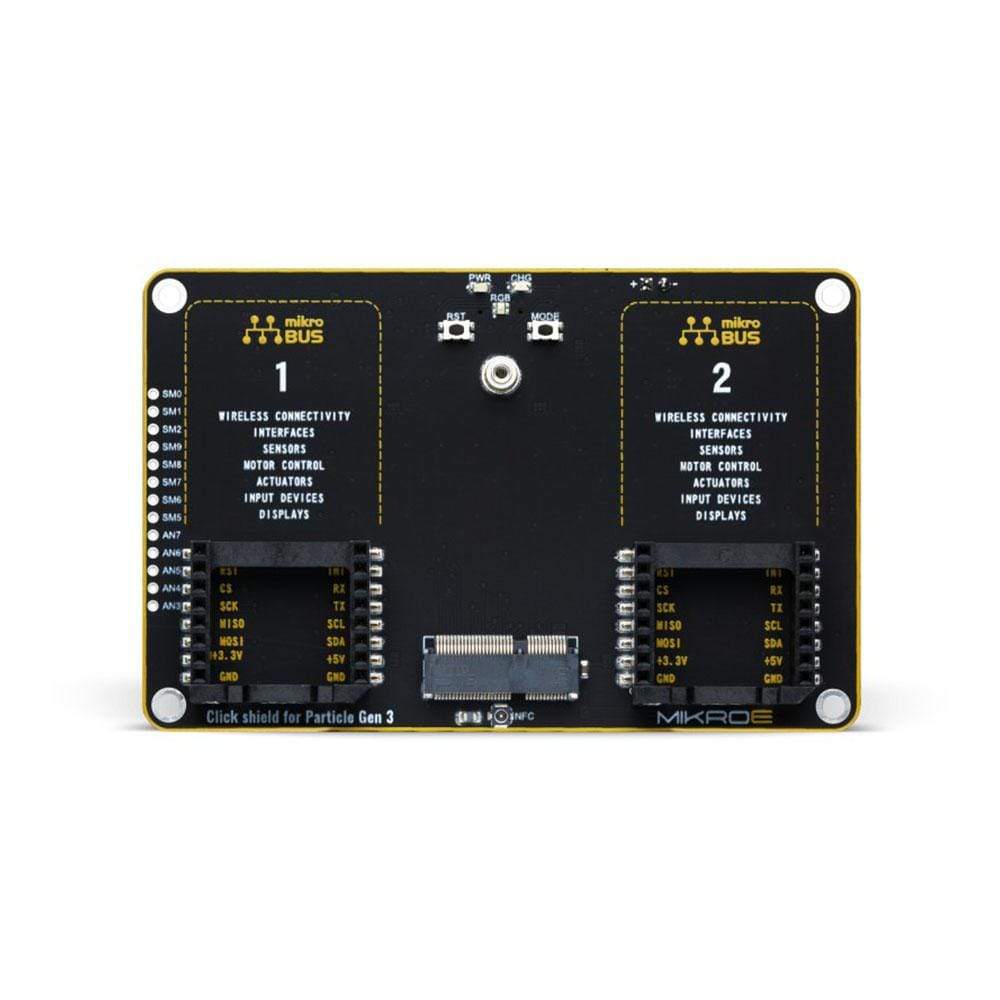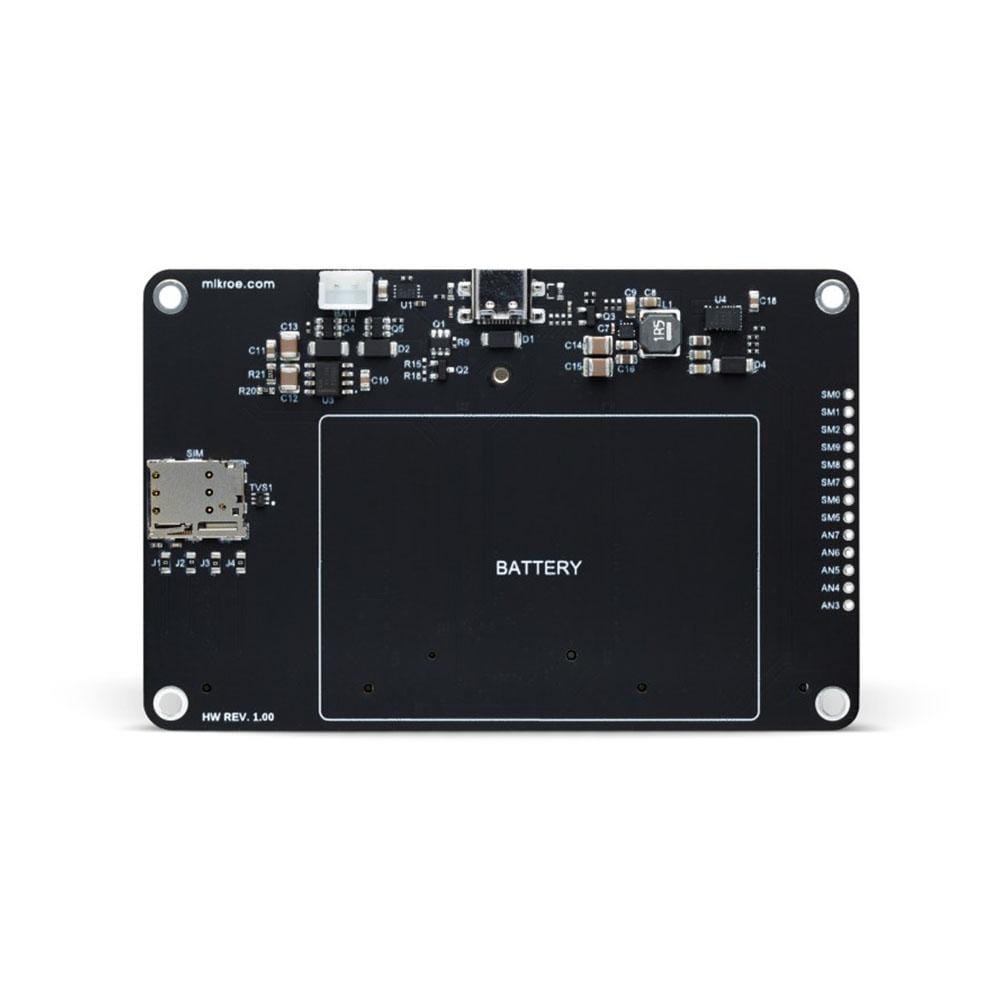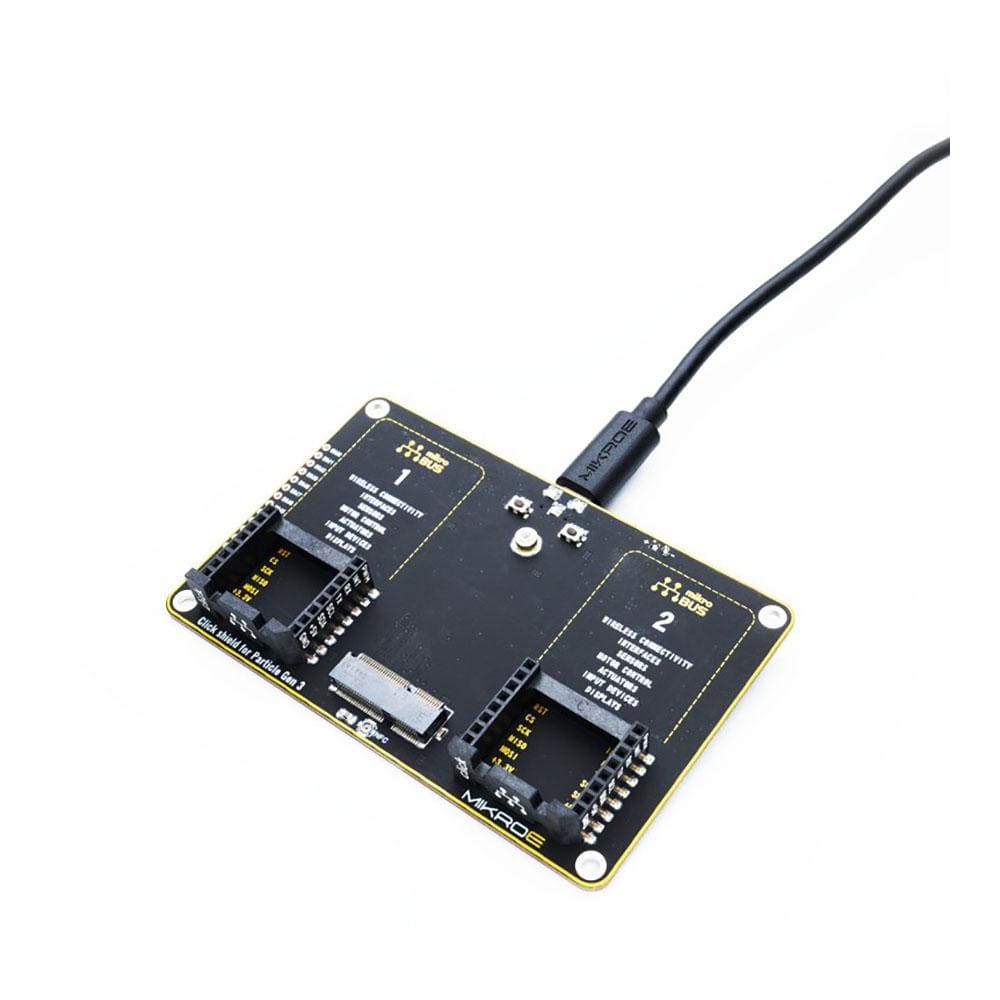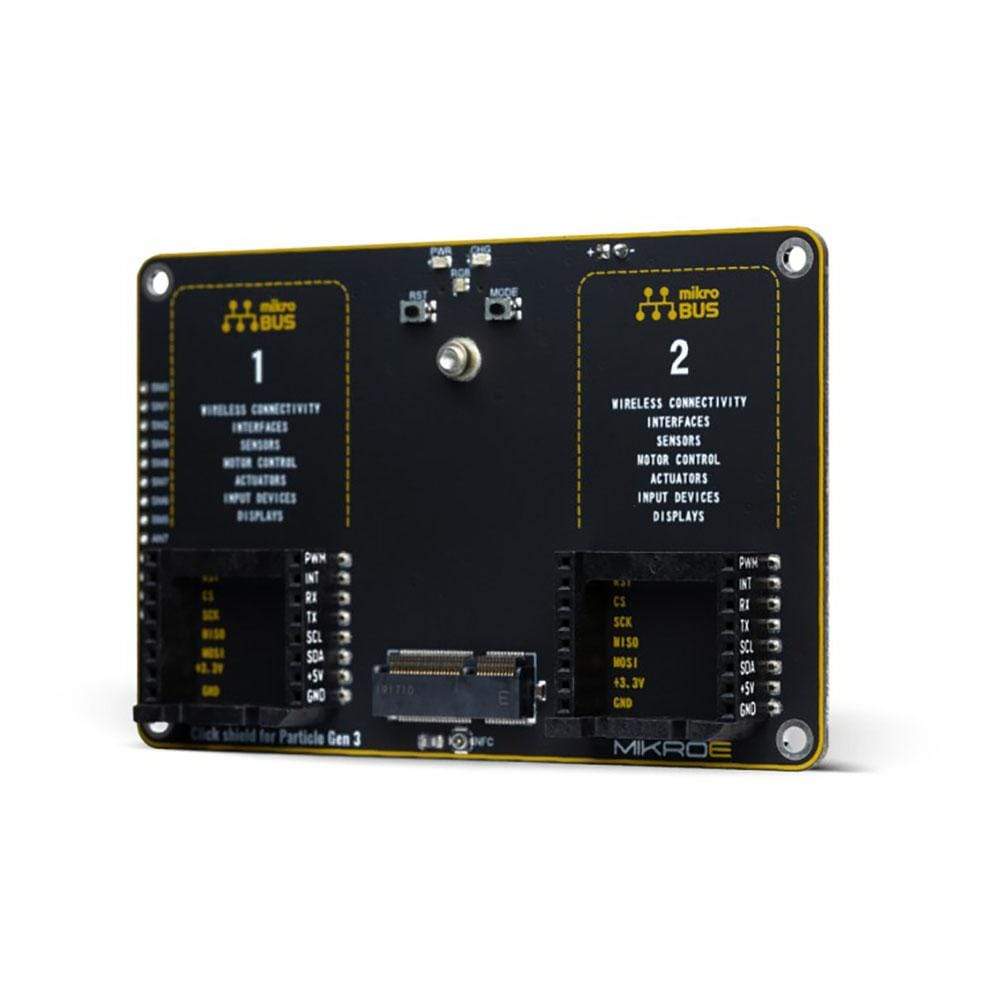
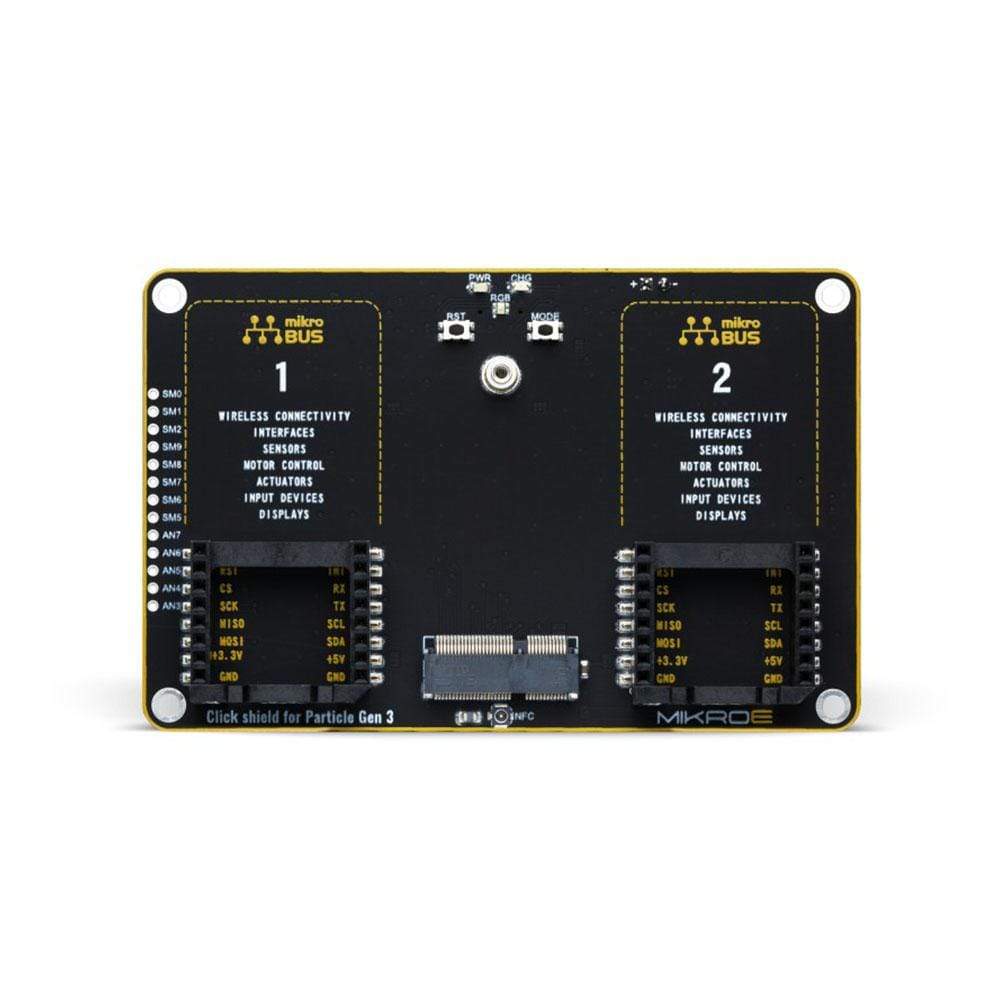
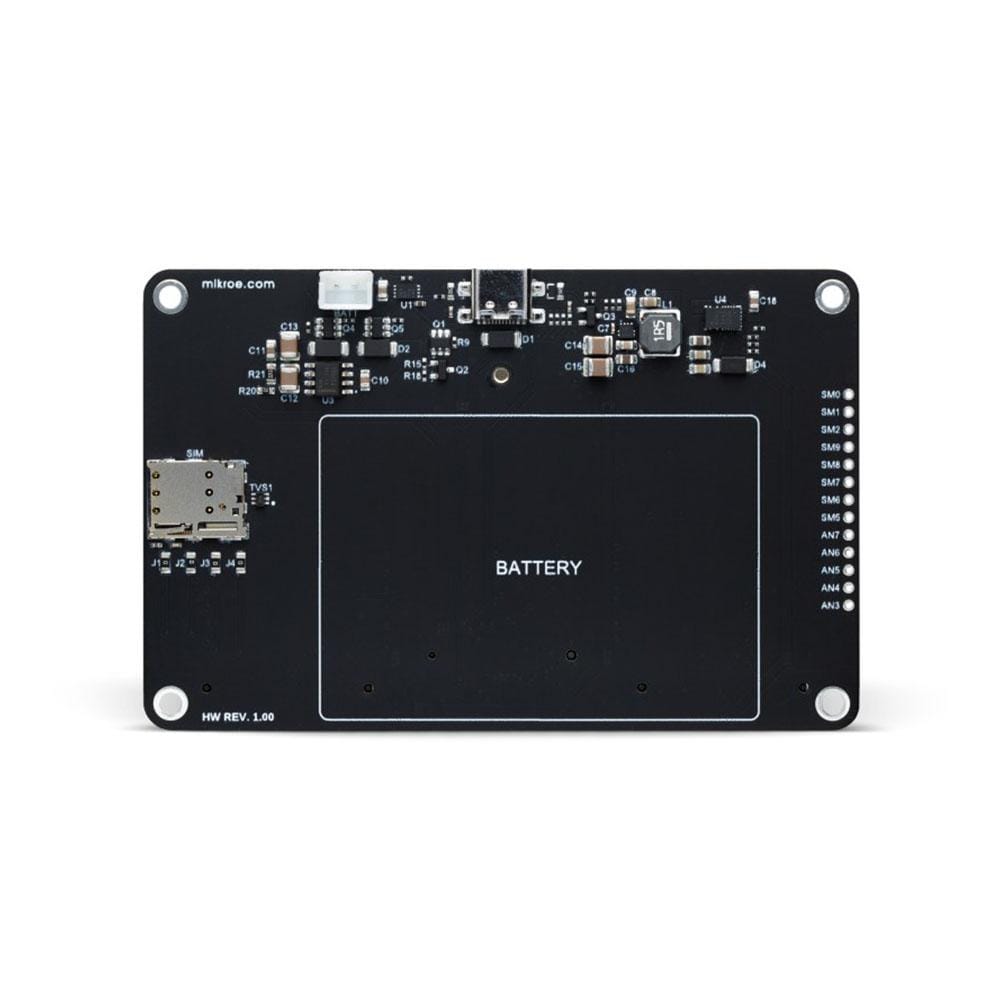
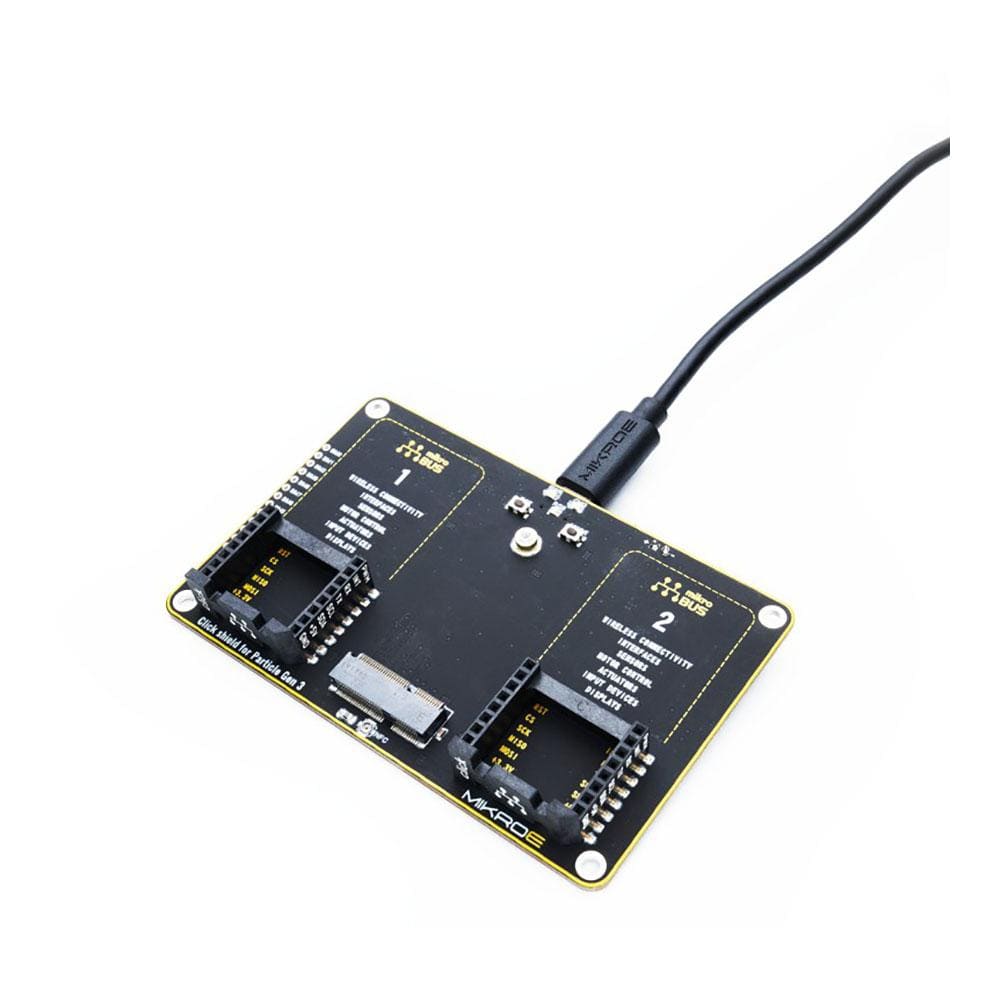
Overview
The Click shield for Particle B Gen 3 is the perfect way to expand the functionalities of your development board compatible with Particle's B series of cellular IoT modules. It provides two mikroBUS™ sockets to add any functionality from our ever-growing range of Click boards™. We are fully stocked with everything, from sensors and WiFi transceivers to motor control and audio amplifiers.
The central part of this Shield’s design includes the M.2 (NGFF) SoM connector, two mikroBUS sockets, a connector for the LiPo battery, NFC antenna, RGB LED, RESET, and MODE buttons, with an additional power supply unit located on the bottom side of the board. It comes with an onboard USB type C connector and a battery connector for backup power supply, including enough power in case you want to switch modules in the future.
This development platform provides users with an effortless and common way to combine the Particle's B series of cellular IoT modules board with their favourite Click boards™ in their upcoming projects.
Note: Particle's B series of cellular IoT modules are not included in the package.
Downloads
Le Click Shield pour Particle B Gen 3 est le moyen idéal d'étendre les fonctionnalités de votre carte de développement compatible avec la série B de modules IoT cellulaires de Particle. Il fournit deux prises mikroBUS™ pour ajouter n'importe quelle fonctionnalité de notre gamme toujours croissante de cartes Click™. Nous disposons d'un stock complet de tout, des capteurs et émetteurs-récepteurs WiFi au contrôle moteur et aux amplificateurs audio.
La partie centrale de la conception de ce Shield comprend le connecteur M.2 (NGFF) SoM, deux prises mikroBUS, un connecteur pour la batterie LiPo, une antenne NFC, une LED RGB, des boutons RESET et MODE, avec un bloc d'alimentation supplémentaire situé sur le côté inférieur de la carte. Il est livré avec un connecteur USB de type C intégré et un connecteur de batterie pour l'alimentation de secours, y compris suffisamment d'énergie au cas où vous souhaiteriez changer de module à l'avenir.
Cette plate-forme de développement offre aux utilisateurs un moyen simple et courant de combiner la série B de modules IoT cellulaires de Particle avec leurs cartes Click™ préférées dans leurs projets à venir.
Remarque : les modules IoT cellulaires de la série B de Particle ne sont pas inclus dans le package.
| General Information | |
|---|---|
Part Number (SKU) |
MIKROE-4506
|
Manufacturer |
|
| Physical and Mechanical | |
Weight |
0.04 kg
|
| Other | |
Warranty |
|
Country of Origin |
|
HS Code Customs Tariff code
|
|
EAN |
8606027382390
|
Frequently Asked Questions
Have a Question?
Be the first to ask a question about this.

